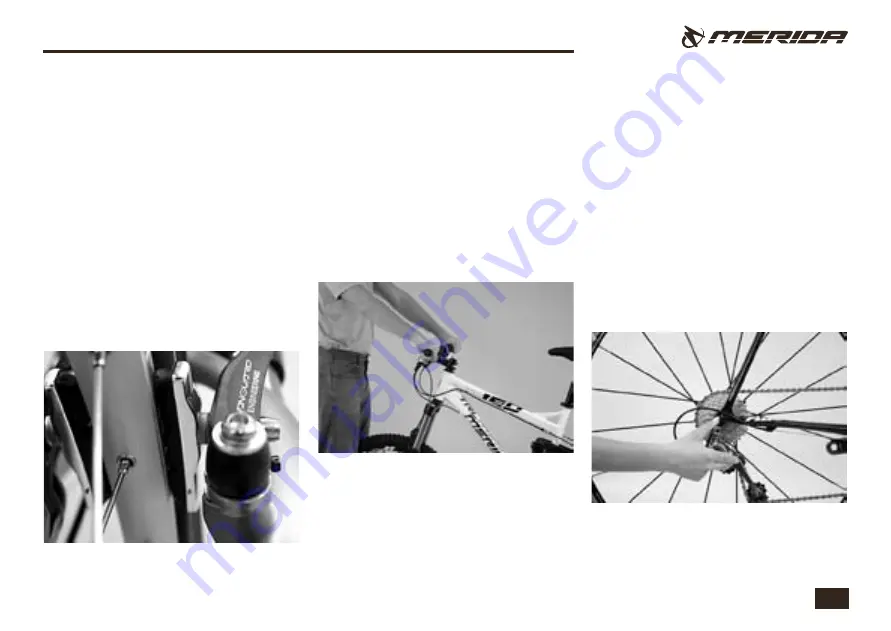
0
5. After an accident
1. Check whether the wheels are still firmly
fixed in the drop-outs and whether the
rims are still centered with respect to the
frame or fork. Spin the wheels and watch
the gap between rims and brake pads. If
the width of the gap changes markedly
and you have no way to true the wheel
on site, you will need to open the brakes
a little so that the rim can run between the
brake pads without touching them. In this
case remember that the brakes will not act
as powerfully as you are used to.
For more information see chapter 9.
“The
brake system“
and chapter 11.
“The
wheels”
.
2. Check that the handlebars and stem are
neither bent nor ruptured and whether
they are level and upright. Check also
whether the stem is firmly fixed in the fork
by trying to twist the handlebars relative
to the front wheel. Also, briefly lean on the
brake levers to make sure the handlebars
are firmly fixed in the stem.
For more information see chapter 8.
“Adapting the bike to the rider“
and
chapter 12.
“The headset“
.
through all the gears. Pay particular atten-
tion when switching to the small gears,
making sure the gear changer does not get
too close to the spokes as the chain climbs
onto the larger sprockets. If the derailleur
or the drop-outs have been bent, this can
cause the gear changer to collide with the
spokes. This in turn can destroy the gear
changer, the rear wheel or the frame!
Check the derailleur function, as a dis-
placed gear changer can throw off the
chain, thus interrupting the power train.
For more information see chapter 10.
“The
gears“
.
3. Check whether the chain still runs on the
chainwheel and sprockets. If your bike fell
over to the chain side, check that the gears
still work properly. Ask a helper to lift the
bike by the saddle, then gently switch















































